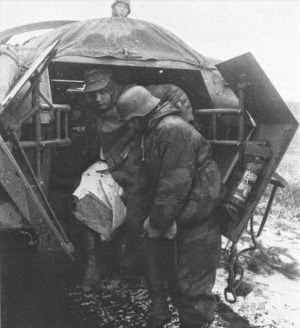 |
| The Gothic marvel that is the Royal Albert Museum, Exeter |
Last weekend we caught the train into Exeter to visit our local main museum, the Royal Albert Museum. It was first opened in 1868 and after receiving a major £24 million "face-lift" lasting four years was re-opened in 2011. This was the first time that we had had a chance to look around since that work was done.
http://en.wikipedia.org/wiki/Exeter
This museum holds childhood memories of school trips not only for Carolyn and me, but both our boys. When they were young, we attended their school trips and helped in the project work about the Romans in Exeter and the fantastic displays of artifacts that the staff displayed for the children, with the opportunity to try out Roman military equipment and armour.
There is more to see than just the ancient artifacts, with extensive world ethnic, zoological and other historical artifacts from other eras that feature in the long history of the city. The museum holds an amazing collection for a provincial museum and the new look to the building which has kept the beauty of the Victorian Gothic architecture but added to it with modern display areas and a modern clean restaurant makes it a major attraction to visitors.
As in previous museum visits I have captured some pictures that I think will appeal to the wargaming/history enthusiast, and because we got so involved in the world and ancient displays, we had to leave at closing time with other galleries, including the English Civil War not looked at. So I intend to add to this post with a second visit in time.
 |
| Zulu shield and weapons |
Exeter and the South West region has links to this period of history with a statue in the city erected in the memory of a controversial general officer of the period, Sir Redvers Buller VC
http://en.wikipedia.org/wiki/Redvers_Buller
Who was born in the nearby town of Crediton and won his VC during the campaign. His later career during the Boer War was not as illustrious and he left the army under a bit of a cloud.
 |
| Zulu thrusting spear - Assegai or Iklwa |
The museum has the assegai shown with its Zulu name, the iklwa, which if I remember is a name given by the Zulus to describe the noise the blade made when pulled from the body. Either way, its a truly formidable weapon when seen close up.
 |
| Zulu throwing spear |
 |
| The beautifully coloured Zulu embroidery |
I love all things Greco-Roman when looking at the ancient period, so to see this typical Greek bronze helmet and imagine what the wearer must have seen from behind that nose guard was a thrill. When you look at it front on and carefully examine the craft work involved in its construction, you notice the delicate pattern work around the nose guard and edging.
Exeter is a Roman garrison town, and I remember we were taught at school to recognise Roman towns in England with names ending in "ter", Exeter, Colchester, Dorchester etc.
To the Romans, Exeter was known as Isca Dumnoniorum, or simply Isca. The name came from the Ancient Briton name for water pronounced "eshk", hence the local River Exe. The Irish and Welsh Celtic languages have a similar word with the Irish using it to describe whisky as the "water of life". It was also the tribal capital of the native Britons in the area, the Dumnonians.
 |
| Roman pottery discovered in the city |
https://www.forumancientcoins.com/historia/sites/maiden/maiden.htm
They stayed in the city for the next twenty years before relocating to Caerleon in Wales, naming that new base Isca Augusta.
Needless to say the museum has an extensive collection of artifacts discovered in the city that cover the Roman occupation, and the building is right next door to a major part of the Roman city wall that has survived to this day, all be it with a few modifications over the years.
 |
| The remains of the Roman wall at the back of the museum |
 |
| Roman soldiers cooking pan, and examples of glass ware |
 |
| I've painted a few of these in recent months |
 |
| The business end of sharp pointy sticks |
 |
| Legionary armour fittings - it's incredible to see these small artifacts that show Exeter's long history |
What does Exeter have in common with the US Marine Corps?
 |
| Exeter - The beautifully restored Guild Hall shopping centre |
http://en.wikipedia.org/wiki/Semper_fidelis
 |
| The arms of the City of Exeter, with the the motto Semper Fidelis, "Always Faithful" granted to the city by Elizabeth I |





































